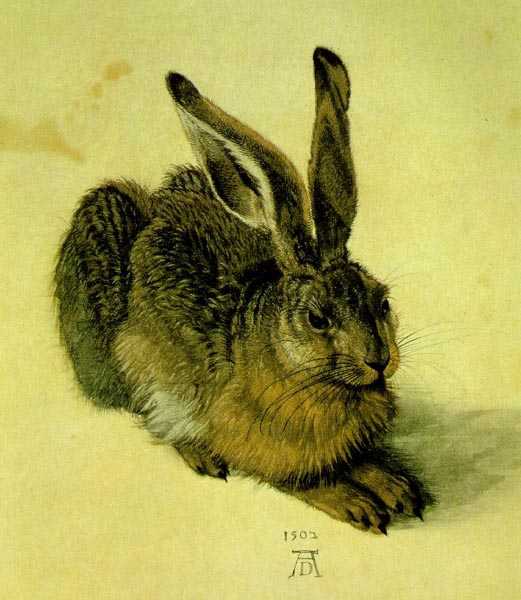Today is officially the first day of spring, so this week’s appropriately vernal picture is a watercolour of A Young Hare by the German Renaissance master, Albrecht Durer. The work bears the artist’s monogram, “AD”, and is dated, in the artist’s elegant and slightly spidery hand, to the year 1502. It forms part of the formidable drawings collection of the Albertina in Vienna.
The fact that Durer so meticulously signed and dated this depiction, from life, of a crouching hare, suggests that he regarded it as rather more than a mere study. He was one of the first Renaissance artists to state explicitly that a painter’s slighter works might be just as prized as his more ambitious creations. In fact he went further than that, arguing (with some justice) that an artist’s true gifts are often lost or diluted when he paints on a large scale. “It must be said,” Durer wrote in a letter to a friend, “that an intelligent, skilled artist can show his powers and his art more clearly in a small thing than many a man in a big work. Real artists will understand that I speak the truth. It follows that some artists, by drawing something with a pen on half a sheet of paper in one day, can produce better art than others who apply themselves diligently to one big work for a year.” A Small Hare is proof of the proposition. It cannot have occupied Durer for more than a few hours, yet it has become one of his most enduringly popular works. In Germany it is a ubiquitous image, reproduced on countless posters, postcards, teatowels and beermats, occupying a position in the national consciousness somewhat akin to that of Constable’s Hay-Wain in England.
Durer lived during an age of geographical...


